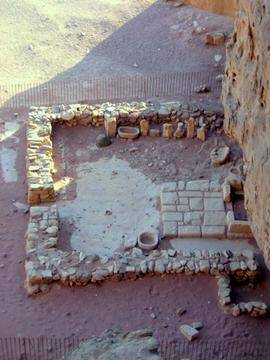
About IAMS
The Institute for Archaeo-Metallurgical Studies (IAMS) is an international body whose purpose is to initiate and promote research into the origins and developments of mining and metallurgy and its culture-historical significance, from its earliest, prehistoric beginnings to recent times. IAMS is a registered UK charity affiliated to the UCL Institute of Archaeology, and associated with the Wolfson Archaeological Science Laboratories.
The active research of IAMS and its teaching programme are undertaken by the members of its Scientific Committee and Research Associates, forming a unique group of highly qualified specialists from UCL and the Royal School of Mines, Imperial College London, as well as from educational and technological institutions of world repute in other countries. It is thus actively supported by the collaboration in research and teaching of experts from a wide range of disciplines, including archaeology, anthropology and history, as well as metallurgy and chemistry, geology and mining engineering.
People
The Institute for Archaeo-Metallurgical Studies is a research led organisation which maintains strong links to both the academic and related commercial metallurgical fields. This is reflected in its board of trustees and its scientific committees which strive to continuously promote the value of the Institute to both scholars and industry.
Trustees
| Robert Perlman chairman |
| Dr Carol Bell Treasurer |
| Dr. John Merkel |
| Professor Vince Pigott |
| Dr. Felix Posen |
| Professor Thilo Rehren |
| Dr. Jean Marie Welter |
| Dr. Marcos Martinόn-Torres |
| Christopher J.B. Green |
| Lynn Biggs |
| Tom Albanese |
Scientific Committee
| Professor Hans-Gert Bachmann Institute of Archaeology, UCL & J.W. Goethe-Universitat Frankfurt-Main |
| Dr. Dan Levene Southampton University |
| Dr. John Merkel Institute of Archaeology, UCL |
| Professor V. Pigott |
| Professor Thilo Rehren Institute of Archaeology, UCL |
History

Whilst the exhibition was at the British Museum, Professor Rothenberg was approached by Sir Mortimer Wheeler, at the time Secretary of the British Academy, and Sir Val Duncan, Chairman of Rio Tinto Zinc Co., with the idea of setting up a London-based international group to follow up the work and widen its sphere from the Middle East into Europe. With the help of prominent businessman Sir Sigmund Sternberg as chairman and financier along with other leading people in the metallurgical world, the Institute for Archaeo-Metallurgical Studies was formally established in 1973. Since then, it has developed into a teaching and research institute, based at UCL's Institute of Archaeology. It was through this affiliation and the new research facilities, as well as the long-term generous support of the Volkswagen Foundation of Germany, RTZ, British, German and American metal companies and several of the private merchant members of the London Metal Exchange (LME) that the Timna research program could be followed through in great depth from a series of large-scale excavations in the Timna mines and smelters in 1974 to 1990, to experimental archaeology as well as into modern mathematical modeling of processes and installations. Due to this systematic, long-range research, Timna has become a world-wide textbook for early copper metallurgy.

In the 1990s, IAMS began a large scale investigation of the prehistoric, Phoenician, and Roman mining and smelting activities at Rio Tinto in southwest Spain, and in the new millennium, attention has shifted towards the far east with a number of doctoral research projects focused on various aspects of mining, smelting, alloying, and casting technology.
In 2002, under the acting directorship of Professor Thilo Rehren, the IAMS newsletter became a fully peer reviewed journal aimed at providing critical research in the field of archaeo-metallurgy to a wider academic audience. In 2004 UCL and IAMS were awarded a grant from the European Commission Framework Programme 6 under the Marie Curie Action, to host over the next four years a number of PhD and Masters students and provide them with Early Stage Training (EST) in the fields of materials science, conservation, and GIS applied to archaeology. Since then, Professor Rehren has assumed the mantle of full directorship.
 Close
Close

